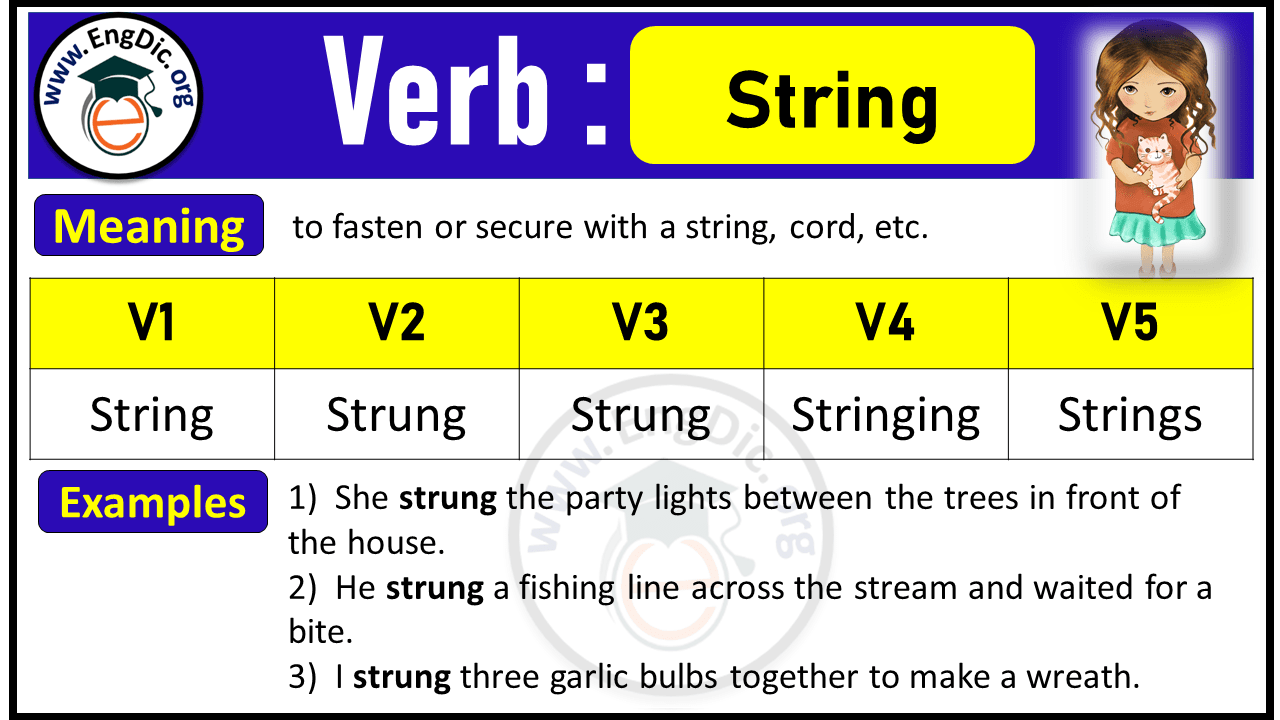String Past And Past Participle Form V1 V2 V3 V4 V5 Form of String
Are you struggling to master the different forms of the verb “string”? You’re not alone.
Whether you’re learning English or just brushing up on your grammar, understanding how verbs transform across tenses can be tricky. But don’t worry, we’re here to help. We’ll break down the past and past participle forms of “string,” along with its variations—V1, V2, V3, V4, and V5.
By the end, you’ll feel confident using “string” in any context. So, let’s dive in and unravel the mystery of verb forms once and for all!

Credit: www.pinterest.com
String In Present Tense
The word string is used to describe something long and thin. It can be a piece of thread or a part of a musical instrument. People use string for tying things. String can also mean a series of things. For example, a string of beads or a string of words. It is important to know how to use string in sentences.
When string is used in present tense, it often means tying or attaching. For example, “I string the beads on a thread.” The word changes form to show different actions. Knowing the forms helps us speak correctly. String can be fun to learn and use.

Credit: engdic.org
Past Forms Of String
The V2 form of stringis strung. This form is used in the simple past tense. It shows an action that happened before now. For example, “She strungthe beads yesterday.” This means she did it before today.
The V3 form of stringis also strung. This form is used with helping verbs like “have” or “has.” It is called the past participle form. For instance, “He has strungthe guitar.” This means he has already done it. The action is completed.
Continuous And Perfect Forms
The V4 form is the present participleof a verb. It often ends with “-ing.” In the verb “string,” the V4 form is “stringing.” This form is used in continuous tenses. For example, “She is stringingbeads.” This shows an action happening now. Another example: “They were stringinglights.” This tells about a past ongoing action.
The V5 form is the base formwith “s” or “es.” It is used in the present simple tense. For the verb “string,” the V5 form is “strings.” We use it with he, she, and it. For example, “He stringshis guitar daily.” This shows a regular action. Another example: “The cat stringsalong the yarn.” This describes an action done by the cat.

Credit: www.pinterest.com
Conclusion
Understanding the string’s forms enriches your English language skills. Practice helps remember V1, V2, V3, V4, and V5 forms. Regular usage ensures these become second nature. Learn through reading and writing exercises. These forms are crucial in expressing time and action accurately.
Mastering them improves communication. Mistakes are part of learning. Keep practicing and referring to examples. Engage with language tools and resources. They aid in reinforcing knowledge. Remember, language learning is a journey. Stay curious and patient. You’ll see improvement with time and effort.
Happy learning!





